Peter Ireland – 30 November, 2015
Solo shows are maybe good for the foot-count (and the artist's reputation), but not so good for lifting the level of public awareness of underlying ideas and issues. But mention “public education” and you can hear curators yawning from here. On the odd occasion when public galleries mount group shows of photography they're almost invariably drawn from their collections; it's rare indeed that an institution will take the initiative to chance anything else - at a time when there's actually a pressing need for doing just that.
Wellington
Caryline Boreham, Conor Clarke, Peter Evans, Shelley Jacobson, Julius Margan, Asumi Mizuo, Solomon Mortimer, Stephen Roucher, Shigeru Takato, Tim J Veling
Selected Exposure
Curated by Haruhiko Sameshima
16 October - 2 November 2015
The glue holding group shows together can be of varying quality. It can range from the watered-down PVA barely securing a bunch of works from a dealer’s stockroom after a scheduled show had to be pulled at the last minute, to the super-glue model where the content has been carefully selected around a well-considered theme. What can happen in the middle is often just too frightening to contemplate; variations on a casually put-together fruit salad where the constituents are either culinarily incompatible or way past their use-by date.
The group show is more usually a convenience than a curatorial exercise, a state of affairs which is something to be mourned, given the potential of the latter in terms of creating an exhibition that’s more than the sum of its parts. This is especially true of photography. Not only does the medium offer both a greater range of images and approaches in photographic practice but its nature is so dynamic - is it just documentary, is it a kind of folk-art, can it be “real” art? - that intelligent group shows can illustrate difference, illuminate strengths and suggest possibilities.
Public exhibition culture these days tends to drift towards solo shows, because marketers tell the curators a single, branded name has greater pulling power. Maybe good for the foot-count (and the artist’s reputation), but not so good for lifting the level of public awareness of underlying ideas and issues. But mention “public education” and you can hear curators yawning from here. On the odd occasion when public galleries mount group shows of photography they’re almost invariably drawn from their collections; it’s rare indeed that an institution will take the initiative to chance anything else - at a time when there’s actually a pressing need for doing just that.
So, the baton must be taken up by enterprising individuals. One of the reasons McNamara Gallery Photography recently updated its interface with its public was recognition of the potential for addressing this need. In the 14 years of its very active exhibition space on Whanganui’s Wicksteed Street, its programme increasingly involved assembling group shows which were then offered to public galleries. Over 30 of these have been successfully shown at various venues around the country. The Gallery’s monthly exhibitions are now shown exclusively on-line, allowing for, among other things, the further development of its national touring programme.
Photographic polymath Haruhiko Sameshima recently conceived a show (1) with the - admittedly unpromising - thesis of recent analogue work by graduates of tertiary institutions who have majored in photography. At first sight such an idea might worryingly resemble one of those increasingly ubiquitous made-up projects whose raison d’être is, frankly, career kapok. It would seem that an individual’s response to the world is rapidly being colonised to the point of extinction by forms of dreary homework.
However, Sameshima’s experience, instincts and curatorial canniness has delivered us from any duty of marking pointless exercises in advancement. Instead, he constructed a timely, visually rich and thought-provoking show involving ten photographers: eight New Zealanders and two Japanese who have both spent time in this country. It’s almost impossible to imagine his doing a show without a publication - he seems to have ink coursing through his veins - and, true to form, Selective Exposure has one; a modest 34 page publication in both colour and black and white, reproducing all of the show’s images but, also containing, significantly, a six page essay by the curator called ‘Circumstantial Evidence.’ It’s a typically thoughtful rumination on the state of the medium in the second decade of the 21st century: considering the impact of new technologies, the proliferation of learning opportunities and how the medium has impacted on the art world over the past 30 years. It’s a compact and illuminating account which deserves wider circulation.
Sameshima insists that his selection of photographers “does not claim to suggest a collective attitude, or a stylistic manifesto” and so their work runs independently parallel to his essay rather than being merely illustrations for it. As he says, there’s no agenda, except perhaps of taking an opportunity to present a range of current practice, much as what Gregory Burke did in 1989 with his notable Wellington City Gallery show Imposing Narratives: beyond the documentary in recent New Zealand photography, but that show much more ideologically driven.
Sameshima covers this exhibition in his essay:
Imposing Narratives marked a significant shift in the perception of photography as contemporary art in New Zealand on several counts. It reflects a prevailing institutional influence in relocating emphasis of importance from the voice of the photographer to the curatorial narrative. By using the rather old-fashioned art museum trope “Beyond” in the title, which suggests a new arrival - modernity’s favourite obsession - it effectively renders what follows the word as now in the past. What this exhibition surveyed well were the ideas current in art, particularly issues surrounding representation, which affected the practice of traditional documentary photography internationally. But there seems little energy left to actually survey what was going on in the field, to see how local documentary photographers were responding to these challenges in the trappings of representation, to weave their own brand of narratives.
“Their own brand of narratives” is what Selective Exposure is about. Since Imposing Narratives the whole relationship between ‘documentary’ and the photographic tradition has changed radically. There are some who, in their espousal of the rear-guard, so-called ‘art photography’ category, have been unable to perceive this change. Much in the same way that after indigenous peoples achieve independence, the former colonisers still insist on dressing for dinner. It doesn’t take rocket science to become aware that a younger generation - at least two generations away from belief in the tenets of Modernism - is unconcerned about fake categories whose only real function is to shore up redundant notions of what might constitute art. This generation is freshly concerned about social matters - climate change and economic inequality, for instance - similar to those issues vexing documentary photographers over a century ago (who now look like trail-blazers), and for whom considerations of status, hierarchies and all the rest of it are trivial at best and at worst irresponsible. Call it the earnestness of youth if you like, but your condescension is unlikely to lessen their fervour or focus - that’s if it happens to capture their attention at all (2).
Human impact on the environment is, naturally in this scenario, a feature of some of the photographers’ work. Conor Clarke, Peter Evans and, to some extent, Shelly Jacobson make images resonant with this subject, re-tooling The Sublime less as a natural phenomenon than a cultural/industrial one, the implications provoking not so much awe as terror. Asumi Mizuo’s urban scenes superficially resemble Fiona Amundsen’s earlier work (although hers is more poetic), but they come together more recently in the subject matter being Hiroshima - Mizuo’s images are accompanied by copies of deadpan pages from the New Zealand Herald the day the bomb was dropped. The city now is as empty of the action as the paper was ignorant of atomic power. Knowledge and memory, their presence and absence, suffuse these enigmatic images.
Stephen Roucher’s black and white photographs of art-deco-ish Wellington commercial buildings of the 1920s and ‘30s, with their vignetting, dodging and seemingly forced perspective, endue them with a strangeness as if they were striving to imitate New York’s famous Flatiron building, a subject beloved by, among others, Steichen and Stieglitz, as a symbol of Modernity and Progress. As in Mizuo’s work, Roucher explores the relationship with our, by now, natural urban situation. Julius Margan has it both ways, his work patrolling the unstable border between the natural and the urban, the twilight common to all four photographs perhaps suggesting a dusk of the natural as our natural home.
The unstable nature of our cultural home featured in the work of Caryline Boreham and Shigeru Takato. Both artists have settled on specific interiors as their subjects: for Boreham those rooms containing formal portraits of Queen Elizabeth II as reigning monarch, and for Takato, various television studios where news is broadcast or interviews undertaken. The hoary chestnut about interiors lacking actual human presence being “empty” should’ve been well-roasted by now. (Aberhart’s work, for example, is a continuing victim of it.) It’s a witless error based on a reading of photography based exclusively on the subject matter, and its repetition is more tiresome than Monday following Sunday. Any room, whether occupied or not, has been made by humans and occupied by humans for a human purpose and so is, unsurprisingly, suffused by the human. In Aberhart’s case there’s usually the added presence of human memory, human hope and human sadness. Only a dope could say these interiors are “empty”.
Boreham’s mute queen asks a question. And it’s to do with our colonial origins and how long they might tether us to a European heritage when our presence is in the Pacific and our future in association with Asia’s. The question Takato’s interiors pose relates to us too. And it’s nothing less than the big one embedded in the nature of the photographic medium itself: what can we believe is real? Of course, it’s easy - almost natural - for sophisticates to sneer at such naïve simplicities. But we’re assailed from all sides - politicians, the media, people selling stuff (including art dealers moving product); all of them basically salesmen - telling us they know what’s good for us and wanting us onboard. How do we know they’re right? Or wrong? Are our feet still touching the bottom somewhere? Takaro’s images of “empty” television studios are stark symbols of this moral dilemma, one which photography, of all the arts, highlights so centrally and so relentlessly.
The exhibition’s odd man out seems to be Solomon Mortimer. OK, it may be slightly unfair to come to a conclusion on the basis of just six works in this show (3), but it’s as if someone from the professional photography milieu had decided, for reasons known only to himself, to replicate some of the more exhausted clichés from documentary photography styles of the 1960s and ‘70s. While this enterprise may reveal an admirably firm grasp of a period older than the photographer himself, it’s not easy to divine what the point of it might be. Ironic quotation has largely had its day, so that particular explanation would seem unlikely. Besides, apart from the echoes of decades ago, there’s no obvious thread holding the work together, or hints of a position which may provide clues as to the photographer’s motivation and aims. His website suggests he’s interested in creating bodies of work around certain themes, but is earnestness enough?
There can be no doubt whatever about Tim J Veling’s motivation and aims. His father recently succumbed to the ravages of cancer, and once the nature and outcome of the illness were known Veling committed to documenting his father’s final months. His father seems to have been equally committed, and while the “up close and personal” approach can be unnerving, the love and trust implicit in this project is palpable, the imagery carrying a great weight with a lightness of being found in moments of ordinary intimacy: having a smoke and a beer, nursing a grand-child, taking a snooze in the sun. In its simplicity and affectingness this project is a moving and memorable example of what photography only can do. In meeting Pete Veling’s fearless gaze we know convincingly that the bottom has been reached by our feet.
Peter Ireland
(1) This small but ambitious exhibition found a home in Wellington’s enduring Photospace Gallery, providing a rare opportunity to see in the flesh works by many photographers who show mainly in Auckland and elsewhere overseas. The show’s intellectual reach may have been a little diminished by the necessarily cramped nature of the installation, but nonetheless it was better to see the work too-tightly hung than not see it at all.
(2) See Melanie Gerlis’s article on the current Miami Art Fair in The Art Newspaper, 3 December 2015.
(3) But this writer is familiar with his work generally.
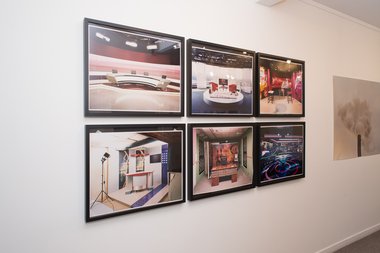
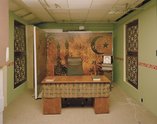
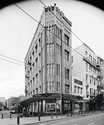
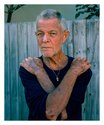
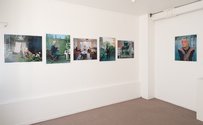
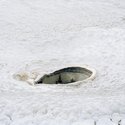
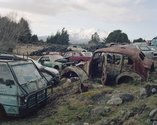
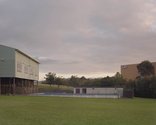
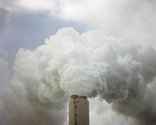
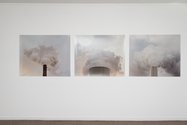
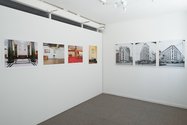
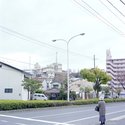
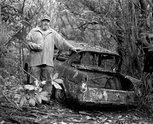

 Advertising in this column
Advertising in this column Two Rooms presents a program of residencies and projects
Two Rooms presents a program of residencies and projects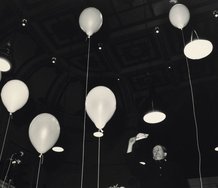
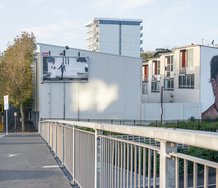
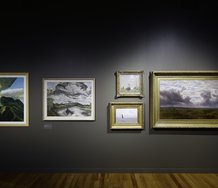
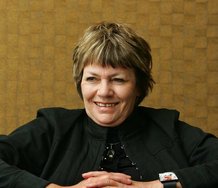
This Discussion has 0 comments.
Comment
Participate
Register to Participate.
Sign in
Sign in to an existing account.